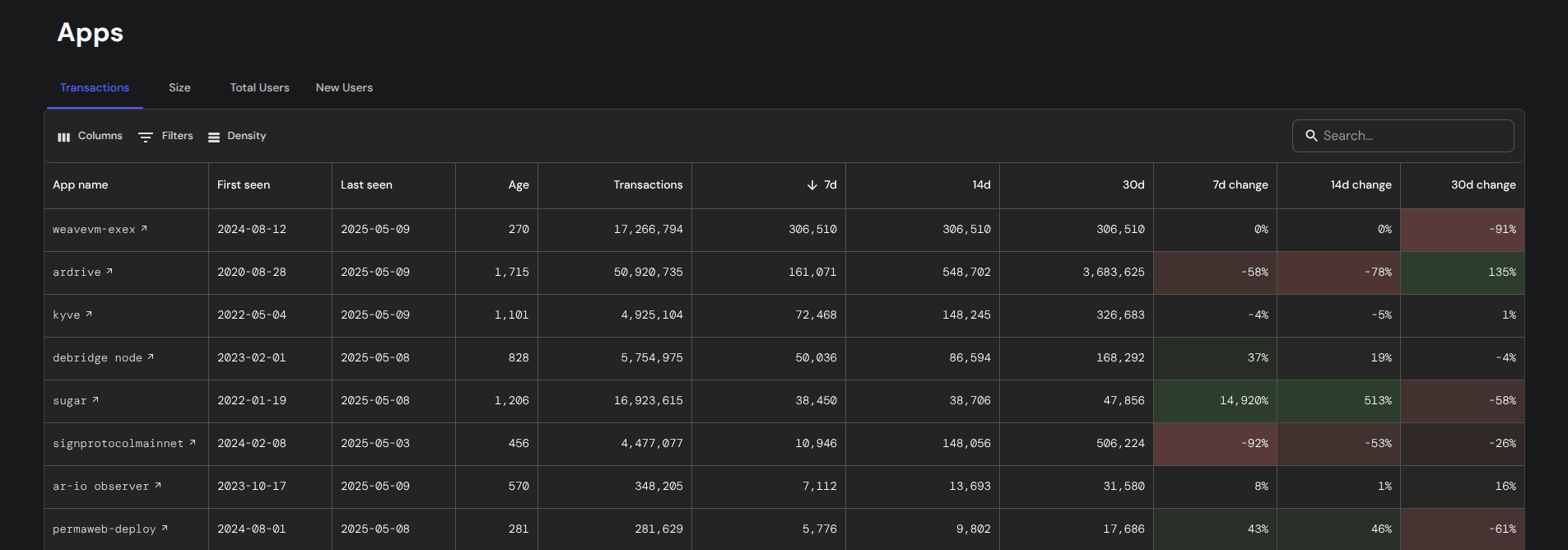It has been almost 3 months since we released the Kasparov Upgrade, shipped as Alphanet V4. The Kasparov Upgrade targeted critical improvements on the I/O of 0x17 & 0x18 Arweave precompiles, the WeaveDrive ExEx integration and Load’s native JSON-RPC methods to retrieve Arweave block storage proof & retrieve Load L1 txs with the given tags.
Today we are rolling out Alphanet v5 - the stable testnet where Load’s dApps will live while we go and push the limits on the forthcoming Fibernet.
Alphanet v4 recap
We won’t be going in-depth on Alphanet v4’s traction because it has been fully loaded here – as a TL;DR, the Kasparov network release has processed over 10M transactions, and was the inception of Load’s exponential dApp ecosystem growth. To read more about the major milestones during Alphanet v4, check out this blog post .
Introducing Alphanet v5, the Inflection Upgrade
Minimizing the ossification risk of Load Testnets
While working on the growth and adoption of Load Network (prev. WeaveVM) during Alphanet V4, we were facing a crucial inquiry: “it’s a testnet, how I can trust its DA or data permanence? What if the state drops? What if you hard fork it?” – and we agree, it’s a valid question. However, the beauty of Load Network’s design is the inherent data settlement and versioning on Arweave, even on testnets. This data settlement solves the problem of testnet data drops/pruning. But we still had to address the requirement of minimum period of data availability on the EVM layer, along with guarantees for a stable state for dApp developers during testnet release – no breaking changes, a deterministic testnet.
And that’s how we came up with the idea of the Inflection Upgrade: Alphanet v4 will transition into a stable testnet with minor soft forks (after changes, thus Alphanet v5), and Fibernet will come soon as an unstable higher performance testnet playground (network upgrades as soft or hard forks). Therefore, you can see Alphanet v5 as an inflection point in the Load Network performance curve: it’s a stable release where you can safely use storage, DA and deploy dapps – and the exponential performance growth will come with the near-coming Fibernet network release. Now let’s explore Alphanet v5 major changelogs.
Beefy infrastructure: baremetal nodes
On April 24th, we announced our partnership with Latitude.sh – the leading baremetal servers as a service platform - we have migrated our network nodes to run them on baremetal, offering higher compute limits with cost efficiency.
> “We have validators, consensus nodes, and soon we’ll have archival nodes. We’re going to use Latitude’s file system—the storage that plugs in with a script and can distribute across servers,” said Pirela. “These nodes are storage-intensive—we’re talking about terabytes of data—and we want to be able to distribute that with ease. We see that Latitude offers that.” – Andres Pirela, Load Network Lead Rust Engineer – in an interview with Latitude.
To learn more about the partnership and infrastructure migration, check it out here https://www.latitude.sh/customers/decent-land-labs
Arweave ExEx with a new Database Driver: Planetscale
Our team has been working with Reth ExEx since their release, shipping the first ever Arweave ExExes – Alphanet V4 was running Google BigQuery ExEx as part of the Arweave ExEx stack, and this single-client support introduced a deep dependency issue in our stack. To address that, we built a new DB Driver ExEx built on top of planetscale-driver in PR#144 and integrated it in the Reth client in PR#145.
Given that, we have delivered so far 2 database clients, Google BigQuery & Planetscale MySQL. We believe that with a single-client network’s node dependency, a client bug equals a butterfly’d chain bug and compromise, for that reason we are aimed to keep developing SaaS agnostic DB drivers such as Postgres, MySQL, etc.
Miscellaneous
As every network release, we addressed bug fixes, a major bug fix on the message payload size in the Consensus Layer and its parity with the Execution Layer, and code cleanups. Checkout the full changelogs in the v0.5.3 release
Alphanet V5 state: glimpse of ever-growth
Apart from the network-level release changes, the state of Load Network is growing and Alphanet V5 is offering robust and beefy nodes to handle the data and DA demand. At the time of writing, the network is running at 0.12 MBps (represents 0.18% of max data capacity, and 5x the data of celestia (0.022 MBps)). Alphanet V5, introduced as a soft fork on May 8th, has already contributed 1.9GB of EVM raw state size.
On the Arweave data settlement level, the Load Network Arweave ExEx data protocol keeps leading week-to-week streaks as the largest data protocol on Arweave with ANS-104 dataitems count (source: https://stats.dataos.so/l1-trends)
And optimistic data bundling layers on top of Load Network such us load0 has processed over 106GB at the time of writing
What’s next with Fibernet
We hate announcement of announcements, but May and June will be big months in Load Network history. From the 500 MBps Fibernet, to web2 data bridges (hint, aws s3), LaoD framework, hyperbeam evm devices, strategic partnerships, and more.
Alphanet, with v5, is transitioning into a stable legacy testnet with client patches and soft forks, allowing a safe environment for dapp development, data settling and DA usage. Fibernet is coming to hyper-load the network, pushing closer to mainnet.

